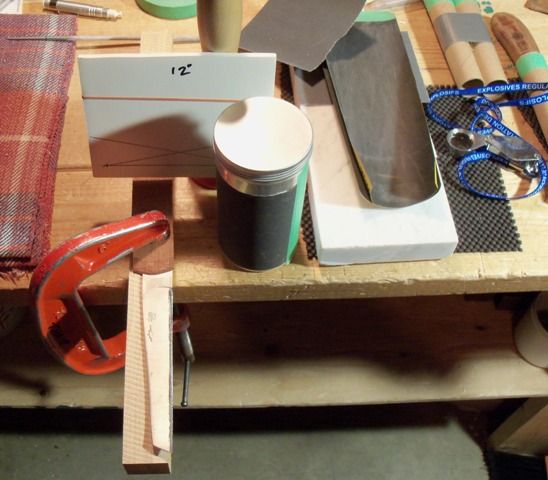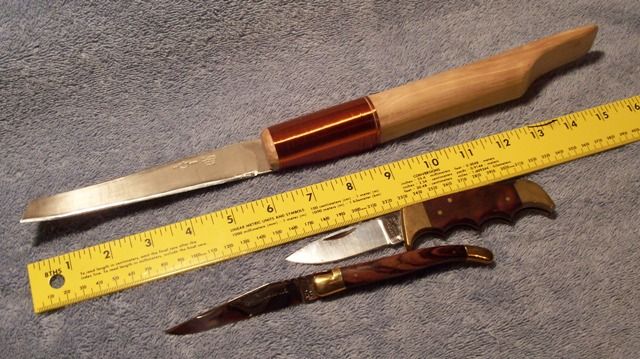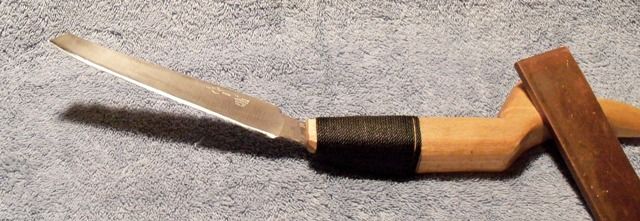Brought to you through the generosity of "tombear" who provided the Sheffield Blade.
This is probably the design purchased by the barrel by the Hudson's Bay Company for the fur trade. Certainly by the mid-1700's in eastern North America.
The knife was the bushcraft essential for native people through out the eastern part of the continent, those in the "birch building region".
Birch is uncommon west of the mountains where spruce, cottonwood, alder and western red cedar are the multipurpose trees.
I have studied fewer than 50 pictures of these knives = they are all different from eachother: handles, haftings and blade sweeps.
So, I cooked it up with birch as I might build an otherwise typical Pacific Northwest crooked knife.
1. 8.57" long, 1" x 3" tang. The blade is so flexible that I supported it as I revised the bevel to 12 degrees with chalk and chainsaw files.
2. Using a can for a mandrel, I refined the bevel with 400, 600, 800 & 1500 grits then honed with CrOx/AlOx on card stock. You can see my reference angle card which I use for consistency with all 12(?) of my crooked knives.
3. & 4. The whipping is #24 copper wire which stretched but is not elastic. So, some days later, the whipping is quite sloppy. The thumb notch is 1.25" too far from the blade. The next handle will, of course, be shorter and I will use #18 tarred nylon seine cord for the whipping.




This is probably the design purchased by the barrel by the Hudson's Bay Company for the fur trade. Certainly by the mid-1700's in eastern North America.
The knife was the bushcraft essential for native people through out the eastern part of the continent, those in the "birch building region".
Birch is uncommon west of the mountains where spruce, cottonwood, alder and western red cedar are the multipurpose trees.
I have studied fewer than 50 pictures of these knives = they are all different from eachother: handles, haftings and blade sweeps.
So, I cooked it up with birch as I might build an otherwise typical Pacific Northwest crooked knife.
1. 8.57" long, 1" x 3" tang. The blade is so flexible that I supported it as I revised the bevel to 12 degrees with chalk and chainsaw files.
2. Using a can for a mandrel, I refined the bevel with 400, 600, 800 & 1500 grits then honed with CrOx/AlOx on card stock. You can see my reference angle card which I use for consistency with all 12(?) of my crooked knives.
3. & 4. The whipping is #24 copper wire which stretched but is not elastic. So, some days later, the whipping is quite sloppy. The thumb notch is 1.25" too far from the blade. The next handle will, of course, be shorter and I will use #18 tarred nylon seine cord for the whipping.






